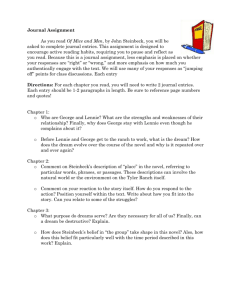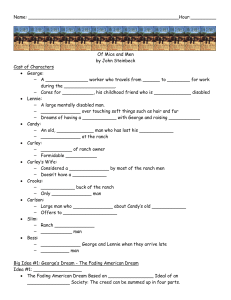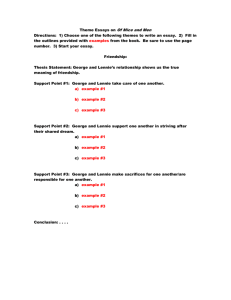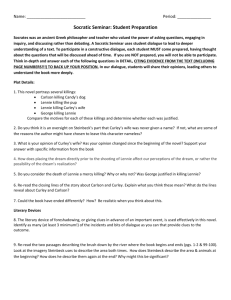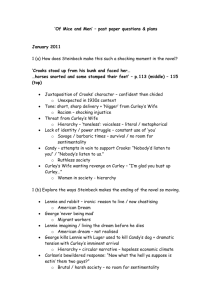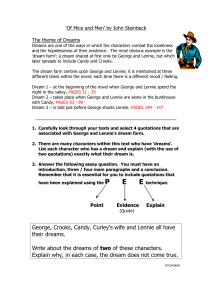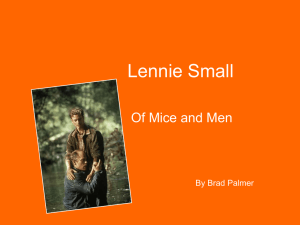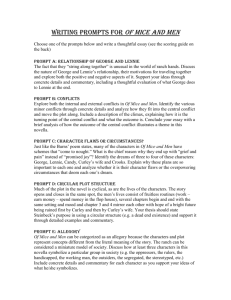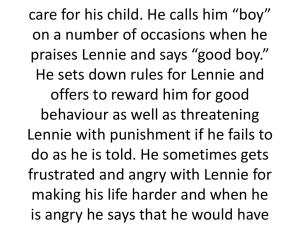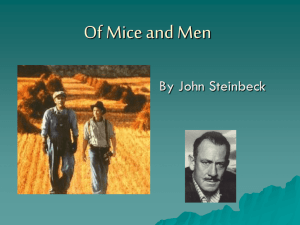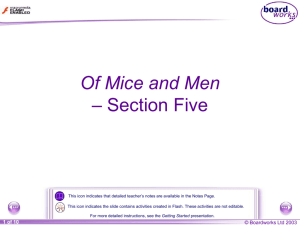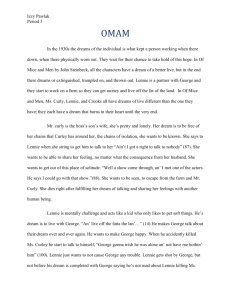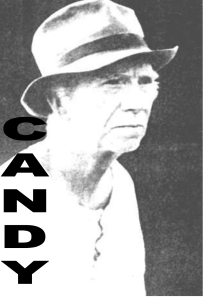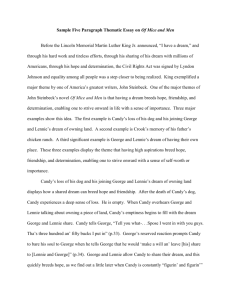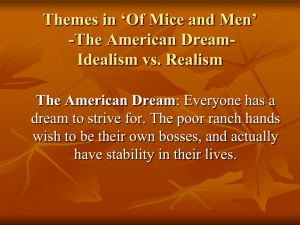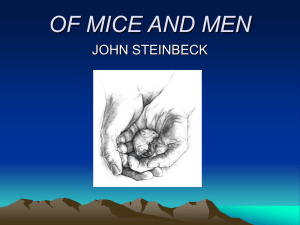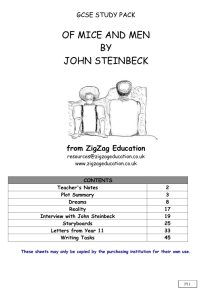the File
advertisement
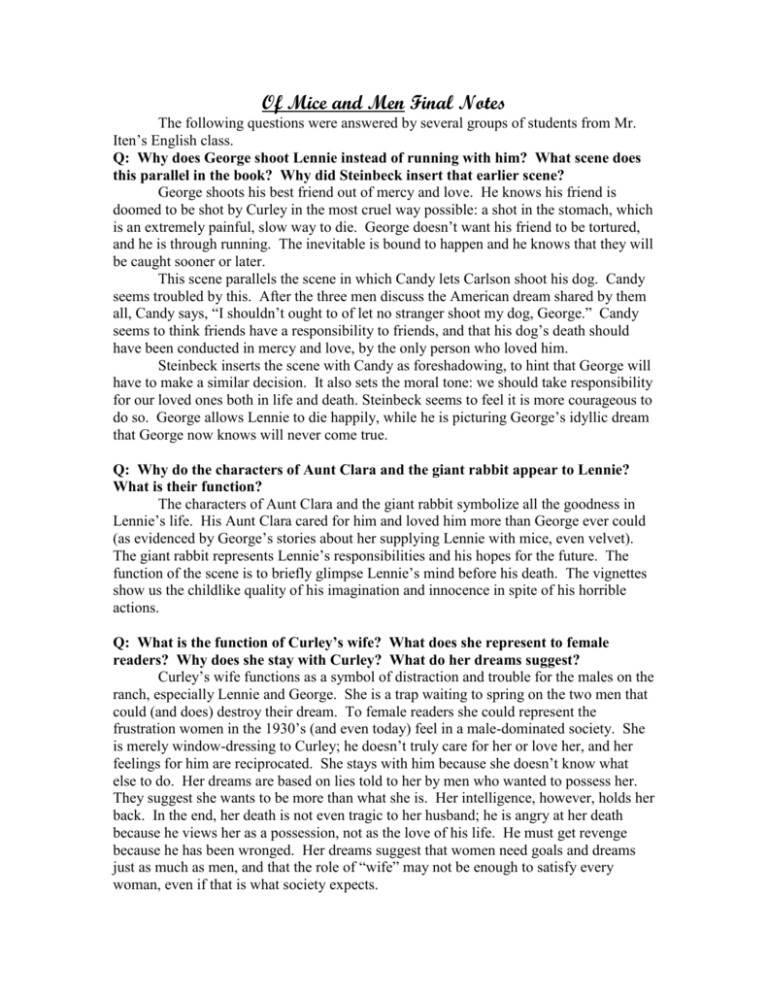
Of Mice and Men Final Notes The following questions were answered by several groups of students from Mr. Iten’s English class. Q: Why does George shoot Lennie instead of running with him? What scene does this parallel in the book? Why did Steinbeck insert that earlier scene? George shoots his best friend out of mercy and love. He knows his friend is doomed to be shot by Curley in the most cruel way possible: a shot in the stomach, which is an extremely painful, slow way to die. George doesn’t want his friend to be tortured, and he is through running. The inevitable is bound to happen and he knows that they will be caught sooner or later. This scene parallels the scene in which Candy lets Carlson shoot his dog. Candy seems troubled by this. After the three men discuss the American dream shared by them all, Candy says, “I shouldn’t ought to of let no stranger shoot my dog, George.” Candy seems to think friends have a responsibility to friends, and that his dog’s death should have been conducted in mercy and love, by the only person who loved him. Steinbeck inserts the scene with Candy as foreshadowing, to hint that George will have to make a similar decision. It also sets the moral tone: we should take responsibility for our loved ones both in life and death. Steinbeck seems to feel it is more courageous to do so. George allows Lennie to die happily, while he is picturing George’s idyllic dream that George now knows will never come true. Q: Why do the characters of Aunt Clara and the giant rabbit appear to Lennie? What is their function? The characters of Aunt Clara and the giant rabbit symbolize all the goodness in Lennie’s life. His Aunt Clara cared for him and loved him more than George ever could (as evidenced by George’s stories about her supplying Lennie with mice, even velvet). The giant rabbit represents Lennie’s responsibilities and his hopes for the future. The function of the scene is to briefly glimpse Lennie’s mind before his death. The vignettes show us the childlike quality of his imagination and innocence in spite of his horrible actions. Q: What is the function of Curley’s wife? What does she represent to female readers? Why does she stay with Curley? What do her dreams suggest? Curley’s wife functions as a symbol of distraction and trouble for the males on the ranch, especially Lennie and George. She is a trap waiting to spring on the two men that could (and does) destroy their dream. To female readers she could represent the frustration women in the 1930’s (and even today) feel in a male-dominated society. She is merely window-dressing to Curley; he doesn’t truly care for her or love her, and her feelings for him are reciprocated. She stays with him because she doesn’t know what else to do. Her dreams are based on lies told to her by men who wanted to possess her. They suggest she wants to be more than what she is. Her intelligence, however, holds her back. In the end, her death is not even tragic to her husband; he is angry at her death because he views her as a possession, not as the love of his life. He must get revenge because he has been wronged. Her dreams suggest that women need goals and dreams just as much as men, and that the role of “wife” may not be enough to satisfy every woman, even if that is what society expects. Q: What does the conclusion of Of Mice and Men say about the American dream? Is it for everyone? Who is excluded? Why? Has this changed since the 1930’s? Of Mice and Men’s conclusion suggests that reality can crush the dreams of ordinary people, especially those who don’t have strong family or friendship ties. The American dream is for everyone, but hatred, racism, sexism, and apathy can destroy it. In the book, Crooks, because of his color, and Curley’s wife, because of her gender, are excluded by the dream. The entire ranch, however, is excluded because the men don’t seem to have the ability to have close relationships; they typically spend their money on alcohol and prostitutes, and then move on to a new ranch. George and Lennie are the only people who are true friends, and who picture a future together, but Slim and Candy seem to be capable of friendship. Since the 1930’s, the American dream has become more accessible, but discrimination and racism still have the ability to wound people and make them incapable of reaching for that dream.
